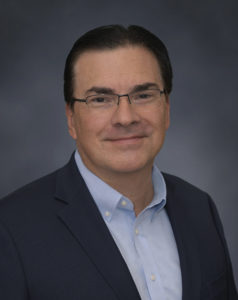
If there is anything that the last several years have taught long-term care providers about managing emergencies and disasters, it’s that strong leadership is a critical operational component to help ensure a positive outcome.
Skilled nursing facilities across the nation have had to deal with fast-moving wildfires, catastrophic hurricanes, a ferocious infectious disease outbreak and a variety of other local and regional disasters. Not to mention, individual facilities continuously have to prepare, respond and recover from internal emergencies like fires, power disruptions, flooding, acts of violence, severe weather and all of the other adverse events that can impact a healthcare provider in a blink of an eye.
While the Centers for Medicare & Medicaid Services requires SNFs to develop and maintain a comprehensive emergency preparedness “program” in accordance with current regulations, one component of emergency management that should be at the top of every facility’s emergency management list of priorities is the development of personnel within the facility who can lead the charge when crisis strikes.
In the world of emergency management, the person in charge of an incident, whether it is an adverse event inside of a nursing home or an emergency handled by the community’s first responders, is officially called the “Incident Commander.”
For a person to be the incident commander they must think like an incident commander. In accordance with all versions of the Incident Command System, including the Nursing Home Incident Command System utilized by SNFs around the nation, the incident commander is required to identify the “objectives” that are needed to manage the emergency or disaster to a positive outcome.
Once objectives have been identified, they are aligned to an operational period by the incident commander to help ensure a system of accountability. If an objective is met before the end of the operational period, new objectives can be developed to further manage the evolving scenario. If an objective is not met by the end of an operational period, the scenario must be re-evaluated, and a longer operational period is created or new objectives and operational periods are created.
Here’s an example: A broken overhead sewage line is raining down contaminated waste into several rooms within a wing of a SNF, placing residents, staff and visitors in a hazardous situation.
The facility activates its Emergency Operations Plan, and an incident commander is identified as the person in charge. The incident commander then communicates an objective to the team to evacuate the entire wing to safeguard all occupants from the hazardous condition that is occurring. They state that the wing should be evacuated in the next ten minutes. If the wing is evacuated in seven minutes, the objective has been met, and new objectives are developed to further manage the emergency. If the wing is not evacuated in ten minutes, the incident commander will re-evaluate the situation and either lengthen the operational period or develop a new objective(s) and operational period(s) to initiate additional action.
Effective incident commanders don’t develop spontaneously or by accident. Every facility should have a comprehensive EOP that identifies which personnel, by virtue of position (administrator, DON, maintenance director, etc.) and not by individual names, can take on the role of incident commander during an emergency or disaster. Additionally, robust training, drills and exercises are needed to prepare staff to manage unforeseen emergencies like a pipe break as well as forecasted emergencies like an approaching hurricane.
Skilled nursing facilities, as well as all healthcare and senior services providers, should understand that the incident commander position and the training required to cultivate effective leaders during a crisis should not be limited to traditional management staff. The reality is that managers may not be at the facility when emergencies occur, and front-line team members need to be trained to be the incident commander if the situation warrants such action.
The bottom line is that someone needs to take charge and think like an incident commander.
You can find all the tools and resources for the Nursing Home Incident Command System on these state healthcare association emergency preparedness websites:
Stan Szpytek is the president of the national consulting firm Fire and Life Safety, Inc., based in Mesa, Arizona, and is the Life Safety/Disaster Planning Consultant for the Arizona Health Care Association, California Association of Health Facilities (CAHF), Utah Health Care Association and American Assisted Living Nurses Association (AALNA). Szpytek is a former deputy fire chief and fire marshal with more than 40 years of experience in life safety compliance and emergency preparedness. For more information, visit www.FLSafety.org or e-mail Szpytek at [email protected].
The opinions expressed in McKnight’s Long-Term Care News guest submissions are the author’s and are not necessarily those of McKnight’s Long-Term Care News or its editors.




